It is undeniable that making a fire in the wilderness is an indispensable survival skill. This skill is reckoned for campers, hikers, and other outdoor enthusiasts. The fire has many purposes among which lies warmth, signaling, cooking and protection from wild animals in close proximity to your resting site.
It is, therefore, important to know how to start a fire in an easy way for wilderness emergencies which may be inevitable.
Starting a fire with sticks is one of the essential tools that one should master in a quest to prepare well for the outings especially in the night.
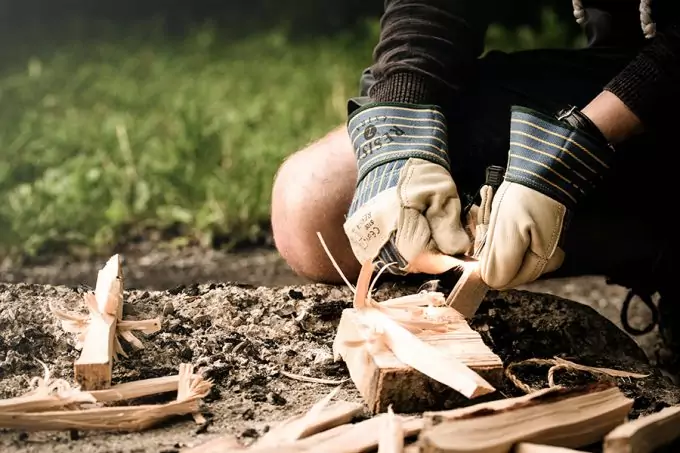
In this article, a comprehensive guide is given which assumes no prior knowledge. The guide focuses on the three most popularly used methods which include the hand drill, the fire plow, and the fire bow drill.
These methods basically rely on the science of friction. Also strongly emphasized is the safety of operating with fires. Firstly, let’s inform you about the importance of using sticks in starting a fire.
The Importance of Using Sticks in Starting Fires
There are notably many benefits of following this route of creating fire for your outdoor desires. A few most important ones are bulleted below:
- Sticks can be made of natural materials found in the wilderness: this makes them reliable and dependable in cases where one has forgotten a matchbox or a lighter.
It could be frustrating to find out that your camping gear has no fire source, meaning you have to go to the nearest stores for another purchase. - Sticks are waterproof and weatherproof: match boxes get wet and cannot be used thereafter unless you dry them provided there’s a hot sun. Sticks work well regardless of the weather conditions.
Even if it rains, they can produce an enormous amount of friction that is basically used to start a fire. - They never get depleted if you are in the forest: you can use dry, sturdy wood to make these sticks. The same cannot be said with matchboxes which can be depleted before your adventure ends.
The lighters also run out of fluid. Fire accelerants such as gasoline and paraffin also get depleted and to replenish them is costly. - They are eco-friendly: no noxious gasses emitted into the surrounding environment because these sticks are naturally crafted with chemical additives. You can buy sticks or simply handcraft your own by making use of a knife.
Alternatively, you can use a rock to sharpen a stick that can be used to create a substantial friction that will eventually result with an ember to create fire.
These are the advantages over matchboxes and lighters or any other fire sources that are bound to get depleted to your dismay. It requires only a specially taught technique to be able to harness the power of sticks in creating a blazing wildfire. You can learn the proper techniques on how to start a campfire by reading our article on this particular topic.

Of foremost importance is the procurement of proper materials needed to commence with the process of making fire. Highlighted below are materials that you need to get going.
Procurement of Materials Needed in Making Wildfire Using Sticks
- A sturdy and dry stick
- A sturdy and dry flat wood to be used as a fire board on which you will use the stick to create friction
- A fire bow and string
- Dry, fine and flammable tinder such a dry grass, sawdust, wood shavings
- Kindling
- Logs and dry sticks to take the fire to the next level
For every method aforementioned in the introduction, different woods may be required. For instance, in a hand drill method, you need a dry wood with extremely low moisture content to make friction easily attainable whereas in a bow drill you need the wood with little moisture so it doesn’t break easily.
The stick dimensions also vary from one method to the other. The bottom line is that you need portable sticks that will not prompt you to put extremely more energy to create friction. Now that you know which materials to secure to start making fire, let’s delve into the core techniques.

Image Credit: offgridweb.com
Remember that it remains your responsibility to master all these techniques as described below. You never know that which one bears quick success when you’re critically faced with an emergency.
These are self-reliant survival skills that anyone preparing upfront for an outdoor excursion should be acquainted with. A method such as a hand drill requires two people interchangeably twirling the stick otherwise one can succumb to the injuries of the hand because the enormous pressure is uncompromisingly needed.
Please note that the materials mentioned above should be staged before using the sticks to create an ember. Keep the tinder closer as well the kindling and the logs nearby. Also noteworthy is the digging of the pit wherein you are going to put the fire.
Rocks should be close as well in order to surround the fire in a bid to prevent it from burning outwards whereby it can end up causing unwanted dangerous forest fires. A fire extinguisher, a bucket of water or sand should be available nearby in cases where you need to extinguish the fire for safety.
How to Start A Fire Using Sticks
As aforementioned, a hand drill, fire plow, and fire bow drill methods are described hereunder.
A hand drill
With this method, you will be mirroring the way you would drill a metal. A flat,sturdy and dry wood is needed as well as a stick that is sharpened at its tip. The other side of the stick is where your hands will be holding to rotate it vigorously. The stick should be perpendicular at an angle of 90 degrees to the fire board.
To prevent the stick moving around the fire board without a focal point, it is reckoned you create a notch where you can focus the friction on.
Then rub your hands on the stick making it rotate while drilling vigorously in the notch. A second notch is recommended for the wood to get more oxygen, which will enable fast creation of an ember.
Note that once you start there should not pause along the way. You will forfeit the amount of pressure applied before, even if you pause for a minute of few seconds. A substantial and continuous downward pressure is needed to successfully create a massive amount of friction.
As introduced earlier, this method basically requires two people to exchange the duties of twirling the stick quickly for one to rest sufficiently. It is also recommended that you wear hand gloves to avoid swelling of your hands because more pressure is mandatory if you want to be successful to start a fire with a hand drill.
To prove that you have applied more energy and have created a massive amount of friction, a smoke will show up which will eventually come with an ember. Quickly take that ember to the tinder prepared and blow some air into it until a flame occurs.
Then subsequently put kindling to boost the fire and ultimately put larger sticks for a long-lasting roaring wildfire, but do not forget to contain it in a dug pit.
If the method fails or takes longer it might be that the downward pressure or the twirling action is insufficient. Transfer that responsibility to someone else or keep trying with much more efforts the second round. It should work just fine provided you have followed the correct procedure and have procured proper materials beforehand.
Here are more techniques on how to quickly start a fire in minutes, just click on the link to our article.
A fire bow drill
This is also the most popular method of starting a fire using sticks. The main difference with this method is that you can use a single hand, unlike in a hand drill which requires both hands. The other hand in this method can balance the stick to keep it intact in place because if it wobbles the friction point will be affected.
Unlike in a hand drill method, you need a wood with little moisture in this case. This wood should be C-shaped like a bow – that’s where the name bow-drill method comes from. To make this C-shaped it takes special skills as well.
You can use the knife you brought to achieve that in the forest, although it isn’t easy like a hand drill that basically needed a flat fire board and a straight stick. Nonetheless, the fruits of making this C-shaped bow are many for your wilderness survival.
A string is also needed which can be, for example, your shoestring or twine. Subsequently, fasten the string on either side of your C-shaped fire bow. Then use a thick stick which you will twirl using the string attached to the ends of the bow. A thick stick makes it easy to grab with that string.
While twirling, the other hand will be stabilizing the block that is put on top of the drill to keep it fixed. In most cases, that block can also cause unwanted friction. It is therefore recommended that you smear a lubricant to prevent that occurrence.
Then follow the procedure of twirling by moving the bow backward and forward the way you would do when you perform sawing. The fire drill, the stick used, will be rubbed against the fireboard and eventually an ember will be produced by the friction that has built up.
Make sure that you have tinder ready and nearby to quickly transfer the ember to it. The other steps follow as described, but before that you should have a pit set with kindling and larger sticks.
The advantage of the fire bow drill is that it takes only a single hand to achieve your purpose. You can quickly exchange your hands without the need of a second person. This helps prevent sore hands that are often witnessed in a hand drill method when you do it alone unless if gloves are used.
Fire Plow
This is our last, popular method described in this article. We are however not intending to be all-inclusive of all the methods used in starting wildfires with sticks. Many users in many cultural groups may be well-versed with many methods that we have never come across.
However, we guarantee you that the ones we have mentioned in this case are the most popular and are deemed critical survival skills that everyone should be knowledgeable of.
The fire plow also subscribes to the science of friction in producing ember. Unlike the previously described methods, this method requires a movement of the stick backward and forward to create friction.
This is achieved through the creation of a groove (sliding) on the fireboard. The stick is however not supposed to be perpendicular at an angle of 90 degrees as in the other methods. It should be at an angle of 45 degrees.
It has proven that sliding the stick vigorously and intensively for a considerably long period of time produces an ember. The more pressure applied the quicker the friction. Quickly transfer the ember produced to your preset tinder and follow steps in making a roaring fire.
As described above, it is apparent that friction plays an indispensable role in starting wildfires using sticks.
Also, in-house fires can be started using these methods. It happens that matchboxes or lighters can be depleted in households. Sticks, therefore, remain the reliable and dependable fire producing sources.
Important procedures based on the methods described above:
- Secure proper materials such as dry sticks, flammable tinder, dry kindling and dry woods.
- Dig a pit wherein you will prepare your fire. Set up your tinder in it wherein you will put the produced ember.
- Use either of the methods to create an enormous amount of friction.
- The take the ember to the nearby dry and fine tinder and then kindling
- Add more wood to help make a blazing fire
Important Safety Tips
It is equally important that you take into serious account the safety precautionary measures of operating fires in general. Statistics have reported heartbreaking news whereby people have burned to death or shelters have been destroyed by unattended fires. That being said, you must make a point that you attend the fire at all times. Children should be kept clear of the fire pit.
Also noteworthy is the distance between the flammable shelter and materials. It is recommended you make fire at least 6 feet from your shelter. During strong winds, the sparks can ignite a fire on flammable materials and even your clothes that you are wearing.
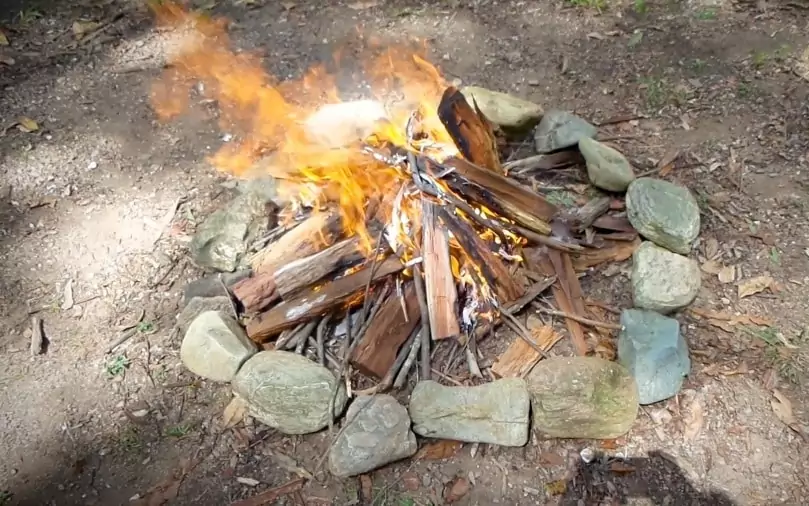
It is also important that you avoid making huge fires during windy conditions. That fire can expand more especially is made in the vicinity of hanging dry leaves of trees or dry grass. Rocks are required to contain the fire within the dug pit.
If you are going to spend more than a day outdoors, make a point that you extinguish the fire before you sleep. Use the fire extinguisher or pour water on it to completely extinguish it. Sand can also help in extinguishing the fire. The same procedure of starting that fire can be repeated the following day.
Please ascertain with the governmental rules of your camping site if wildfires are allowed to avoid getting yourself into trouble. Certain places have restrictions more especially if they are nearby farms. Every method has its cons and pros, although cons are infinitesimally small if the user is extra careful.
Find out more about safety guidelines and tips while hiking by checking out our past article – it’s a must-read.
To sum up, there are basically three popular methods that help one start fires using sticks. As long as you can master the basic techniques of executing the methods you will never go wrong. Making fires will then be an easy task.
However, you should take cognizance of risks associated with creating and operating fires in the wild, particularly where weather conditions fluctuate enormously. Otherwise, you will regret having started a fire in the first place.
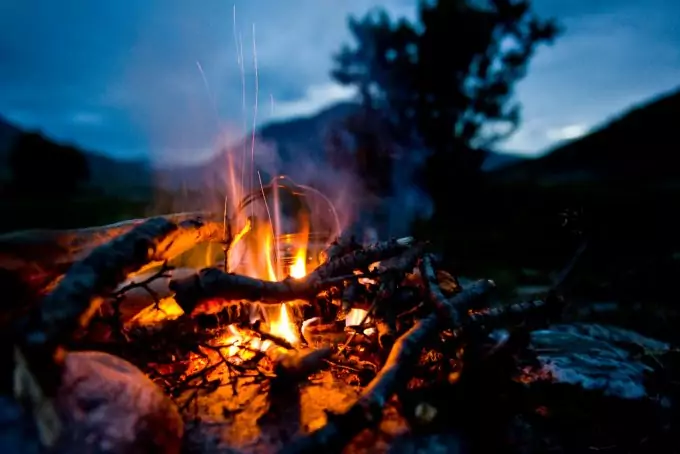
All lies in your hands to ensure your safety and that of your co-survivalists. To start a fire with sticks bears more advantages than using arguably modern ways of matchboxes and lighters.
To learn more of the best fire starters you can use, click on our article for more insight.
We hope that you will find our article useful, and if you have some questions, or want to share your thoughts with us and our readers, feel free to leave a question or a comment in the comment section below.
Click here to check out The Geek Prepper’s “Ultimate Fire Building Guide

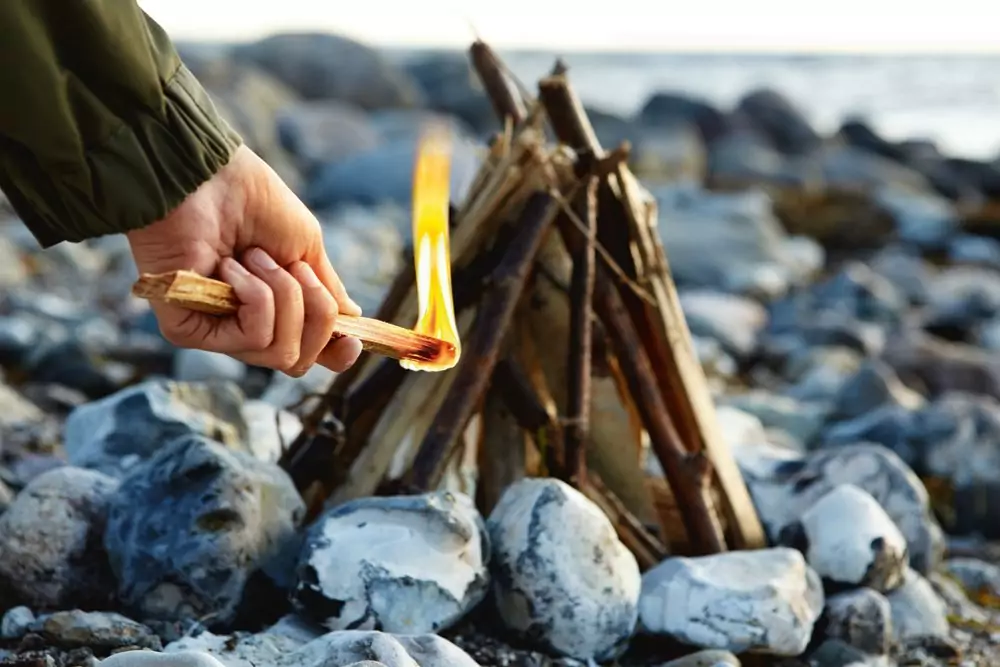

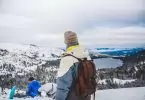
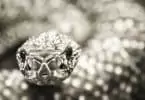

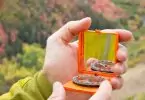

Thank you so much for sharing this knowledge. I love being prepared for the unforeseen and the ability to start a fire with just natures provisions is a key skill. This article is a must read for all campers. You never know when you will be caught without matches or a lighter. This is must-have survival knowledge.
Even with new technology and gadgets, learning basic survival skills is a must for every camping enthusiast. I’m glad you find my post useful, Marion! Take care and enjoy the outdoors!
This is must have survival knowledge for all backpackers and for the general public. You never know when circumstances will demand that you make a fire without the use of a lighter. I am never caught in the wildness without my lighter but like I have said, you never know.
Basic survival skills are best practiced before any emergencies and it is in our best interest to learn. There are a lot of things happening in the world right now, the weather is unpredictable and flooding can happen in almost all places. That being said, even campers who have the latest tech gadgets and survival products need to learn the rudiments of surviving in the wilds.